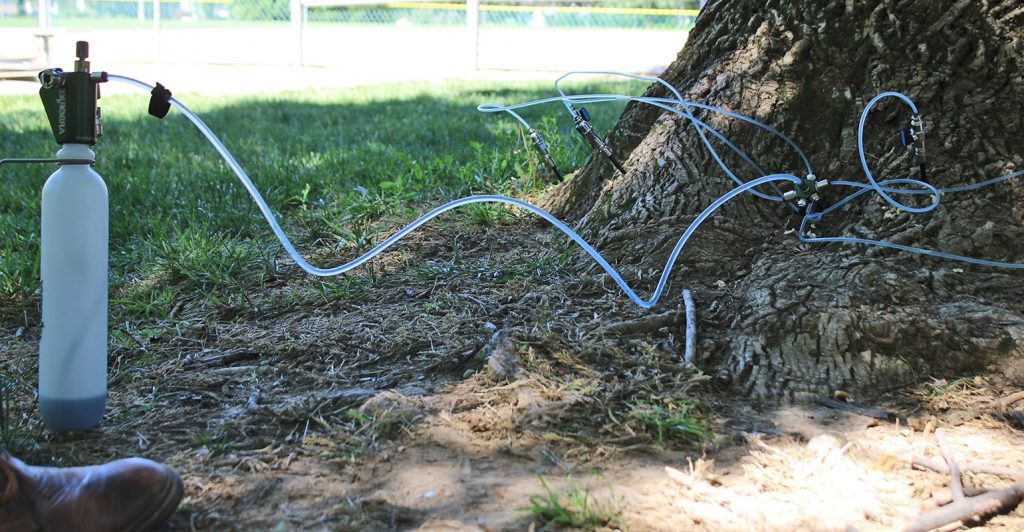Overview
At least 450 non-native forest insects are established in the U.S., and on average, 2-3 more are detected annually. Many of these have caused significant damage to forests. Non-native forest insects typically first establish in urban forests before spreading outward, because most are transported long distances between urban areas in either wood packing material or nursery stock.
The fact that urban forests are often hotspots of non-native insect species also means that detecting and managing pest populations across urban areas can potentially benefit all forests. And since in most cities, the majority of the urban forest is growing on private property, involvement of homeowners in forest pest management is an important part of those efforts.

We are studying urban forest pest management among homeowners in the context of Virginia’s Emerald Ash Borer Treatment Program (EABTP), a program designed to encourage and assist property owners with ash tree protection. We are examining the factors that affect homeowners’ pest management decision-making, and the potential influence that cost-sharing programs such as the EABTP may have on this process.
While this research is primarily concerned with EAB infestation, we hope that results may also be relevant to the management of other existing or newly establishing urban forest pests.